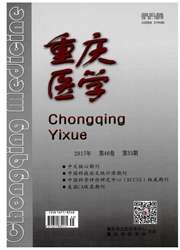

 中文摘要:
中文摘要:
目的:建立DNA损伤的模型,在蛋白水平和mRNA水平研究PCNA的表达变化情况。方法:uV照射和MMS处理细胞后利用Westernblot和实时荧光定量PCR检测PCNA蛋白表达水平和mRNA水平的变化,以及利用倒置荧光显微镜观察细胞的形态变化。运用ShRNA干扰技术降低泛素E3连接酶RAD18和CUIAA的表达,检测内源PCNA蛋白表达水平的变化。结果与结论:uV照射和MMS处理细胞后,细胞形态发生变化,随着时间的延长,大部分细胞趋于死亡。实时荧光定量PCR的结果发现PCNA的mRNA水平下降,但是PCNA蛋白水平的表达无明显变化,说明DNA损伤时PCNA蛋白的稳定性增加,暗示细胞中存在着一定的机制,维持PC—NA蛋白表达量的稳定。干扰E3连接酶CUIAA和RAD18的表达时,PCNA蛋白水平有所升高,提示二者参与了PCNA的降解过程。
 英文摘要:
英文摘要:
Objective:To establish DNA damage model, and study the variations of PCNA protein and mRNA expression levels. Methods:After UV irradiation and MMS treatment, Western blot and real-time PCR were used to detect the changes of PCNA in protein and mRNA levels, and inverted fluorescence microscope was used to observe cell morphology. The expression of E3 ubiquitin ligases RAD18 and CUL4A was knocked down using shRNA interference technology and then the protein expression levels of endogenous PCNA was examined. Results and Conclusion: After UV irradiation and MMS treatment, cell morphology changed with time, and most of the cells tended to show necrosis pattern. The results of real-time PCR showed that PCNA mRNA levels reduced in response to DNA damage. But the protein level ofPCNA did not change significantly, which indicates an increased stability of PCNA protein, and suggests the existence of mechanism permitting to maintain PCNA protein level in response to DNA damage. Silencing of the expression of CUL4A or RAD18 enhanced the expression level of PCNA protein, suggesting the involvement of these two E3 ubiquitin ligases in the degradation of PCNA.
 同期刊论文项目
同期刊论文项目
 同项目期刊论文
同项目期刊论文
 期刊信息
期刊信息
